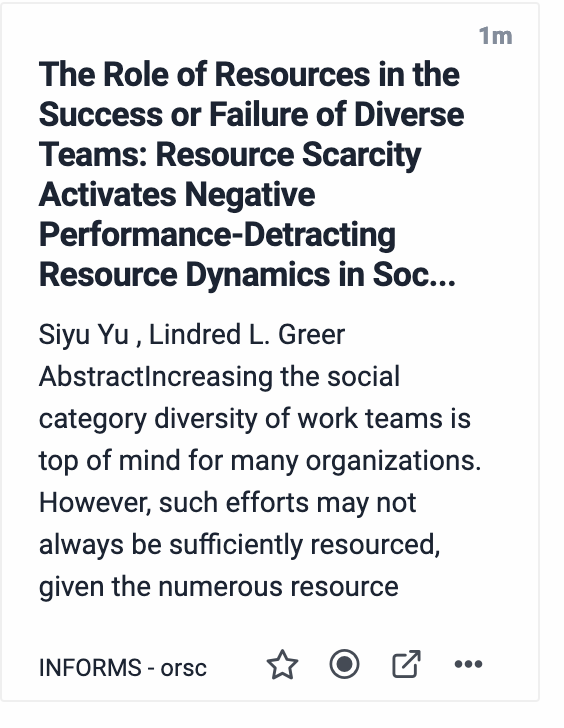-
-
Notifications
You must be signed in to change notification settings - Fork 6.8k
New issue
Have a question about this project? Sign up for a free GitHub account to open an issue and contact its maintainers and the community.
By clicking “Sign up for GitHub”, you agree to our terms of service and privacy statement. We’ll occasionally send you account related emails.
Already on GitHub? Sign in to your account
feat(route): add informs #8873
feat(route): add informs #8873
Conversation
|
This pull request is being automatically deployed with Vercel (learn more). 🔍 Inspect: https://vercel.com/diy/rsshub/8Tn6JppVNXL5uLvWsRKEBc8yCA85 |
|
Successfully generated as following: https://rsshub-8hhog83c9-diy.vercel.app/informs/mnsc - Successhttps://rsshub-8hhog83c9-diy.vercel.app/informs/orsc - Success |
|
Successfully generated as following: https://rsshub-emhph9zpm-diy.vercel.app/informs/mnsc - Successhttps://rsshub-emhph9zpm-diy.vercel.app/informs/orsc - Success |
|
Successfully generated as following: https://rsshub-h13evl87m-diy.vercel.app/informs/mnsc - Successhttps://rsshub-h13evl87m-diy.vercel.app/informs/orsc - **Failed** |
|
@fredericky123 这个似乎是 Inoreader 显示的问题,他会把内容的所有文字不按格式显示出来。 |
相关的例子 我还真不好找唉 这样也能将就看 要不只解决 Abstract后面没有空格的那个问题呢? 在Abstract后直接加个空格就行 |
72b1000
to
4bd69ab
Compare
|
Successfully generated as following: https://rsshub-ggqw4b3an-diy.vercel.app/informs/mnsc - Successhttps://rsshub-ggqw4b3an-diy.vercel.app/informs/orsc - Success |
Done |
* https://github.com/DIYgod/RSSHub: (123 commits) docs: add mirror en style: auto format docs: fix title Add rss feed for mirror (fix bugs in previous PR for this site) (DIYgod#8742) feat: add 华东理工继续教育学院新闻公告; (DIYgod#8843) docs: fix title style: auto format Add(route): add informs (DIYgod#8873) fix(route): Odaily星球日报 (DIYgod#8707) feat(route): add 管理世界杂志社网络首发 (DIYgod#8880) fix(route): hex-rays news pubDate and author (DIYgod#8202) fix(route): zaker wrong link (DIYgod#8776) fix(route): 人民网 (DIYgod#8649) fix: 修复路由xijiayi图片显示 (DIYgod#8808) feat(route): add LogoNews (DIYgod#8810) feat(route): add TOPYS (DIYgod#8812) feat(route): add agirls (DIYgod#8782) style: auto format docs: fix title Add(route): add 蘋果新聞網 (DIYgod#8821) ...
感谢! |


该 PR 相关 Issue / Involved issue
Close #8868
Close #8869
完整路由地址 / Example for the proposed route(s)
新RSS检查列表 / New RSS Script Checklist
Puppeteer说明 / Note